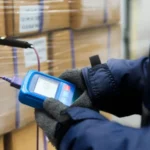Dangerous cargo needs extra effort and utmost safety to transport them from one place to another. It requires special containers to pack, careful loading, unloading, and safe door-to-door delivery. The cargo forwards and dealers have to get certain permissions to transport the goods securely in order to retain consistency for effective logistics. Transporting dangerous goods is a huge responsibility and should be done with all attention and care to avoid any hazards or unavoidable circumstances.
What are Dangerous Goods?
Any good or material that can cause any harm or hazard and has the tendency to create an unreasonable risk to health, safety, and property when transported is known as a dangerous good. One needs to do proper packaging, handling, and storage of these goods to avoid any accidents or risks to the life of people.
Classification of Dangerous Goods
Here are the main classes & divisions of dangerous goods:
Class 1: Explosives
Class 2: Gases
Class 3: Flammable Liquids
Class 4: Flammable Solids, substances liable to spontaneous combustion, substances which on contact with water emit flammable gases
Class 5: Oxidizer, Organic Peroxide
Class 6: Toxic and Infectious Substances
Class 7: Radioactive Material
Class 8: Corrosives
Class 9: Miscellaneous Hazardous Materials and Lithium Batteries
Factors that can Cause Hazards while Delivering Dangerous Goods
Cargo is known as dangerous based on the product’s specific chemical and physical properties. It’s advised to take the Safety Data Sheet (SDS) from the manufacturer and check the transportation Information. By going through the sheet carefully one can get valuable information related to the cargo to be delivered.
Here are some factors that can hinder the delivery of dangerous goods:
- Vibrations
- Static electricity
- Temperature
- Pressure variations
What Hazards can Dangerous Products Cause if Not Handled Carefully?
The dangerous products can cause various health hazards and can even risk the life of people. If these products are not handled properly, then they can:
- Cause items to leak,
- Generate toxic fumes,
- Start a fire, or even explode
How to Deliver Dangerous Cargo?
Although dangerous cargo can be delivered by airways, waterways, and roadways but as per the safety norms and past experiences, there is a high risk to transport them by airways. In comparison to that, it’s always better to transport them by seaways or roadways. Let’s discuss in brief:
- Airways
There is a huge risk while transporting dangerous goods like aerosols, lithium batteries, infectious substances, fireworks, dry-ice, gasoline-powered engines and machinery, lighters, and paint. So, special rules are to be followed for safe delivery and custom clearance is mandatory. The freight forwarders have to work in accordance with ideal standards and policies. Those dangerous goods may only be transported under the terms and conditions of an exemption or approval as provided for by the Technical Instructions, which shall be granted by CAA.
Goods that are specifically identified by name or by a generic description in the technical Instructions as being forbidden for transport by air under any circumstances shall not be carried on any aircraft.
- Seaways
As compared to the airways, delivering dangerous cargo by sea involves less risk. There are special sea containers via which goods are delivered safely on time. Due to the suitable design of the containers, there is no risk of leakage or any accident.
- Roadways
Transporting goods via roadways is an ideal way to deliver hazardous goods with utmost safety. From packaging to loading and unloading, there is less risk of air pressure issues or other factors like in airways. The goods can be delivered by special trucks in customized containers and are the best option for door-to-door delivery.
What Factors Should be Considered for Safe Delivery of Dangerous Goods?
There are many factors that can be taken into account for the safe delivery of dangerous goods. It is advised to follow them to avoid any risk to the health of the people or the environment. They include:
- Custom Clearance
- Special permission
- Proper Labeling
- Special Containers for packaging
- Correctly marked and labelled
There are many standards, rules and regulations that should be kept in mind before transporting dangerous goods. If proper precautions are not taken then they may cause unavoidable hazards. The freight transporting companies should practice every norm and maintain consistency for safe delivery. Travelite offers best-in-class services to deliver your goods with utmost safety. Our team of experts makes sure that every freight is transported on time with complete documentation without any hassle.










